HIV in the United States by Race and Ethnicity: HIV Diagnoses
HIV diagnoses is one of the six Ending the HIV Epidemic in the U.S. indicators. HIV diagnoses refers to the number of people who received an HIV diagnosis each year.


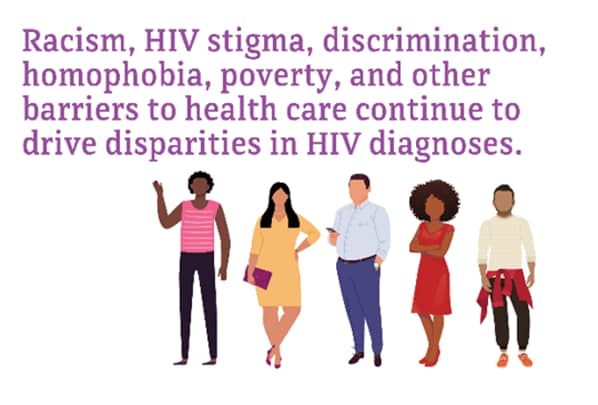
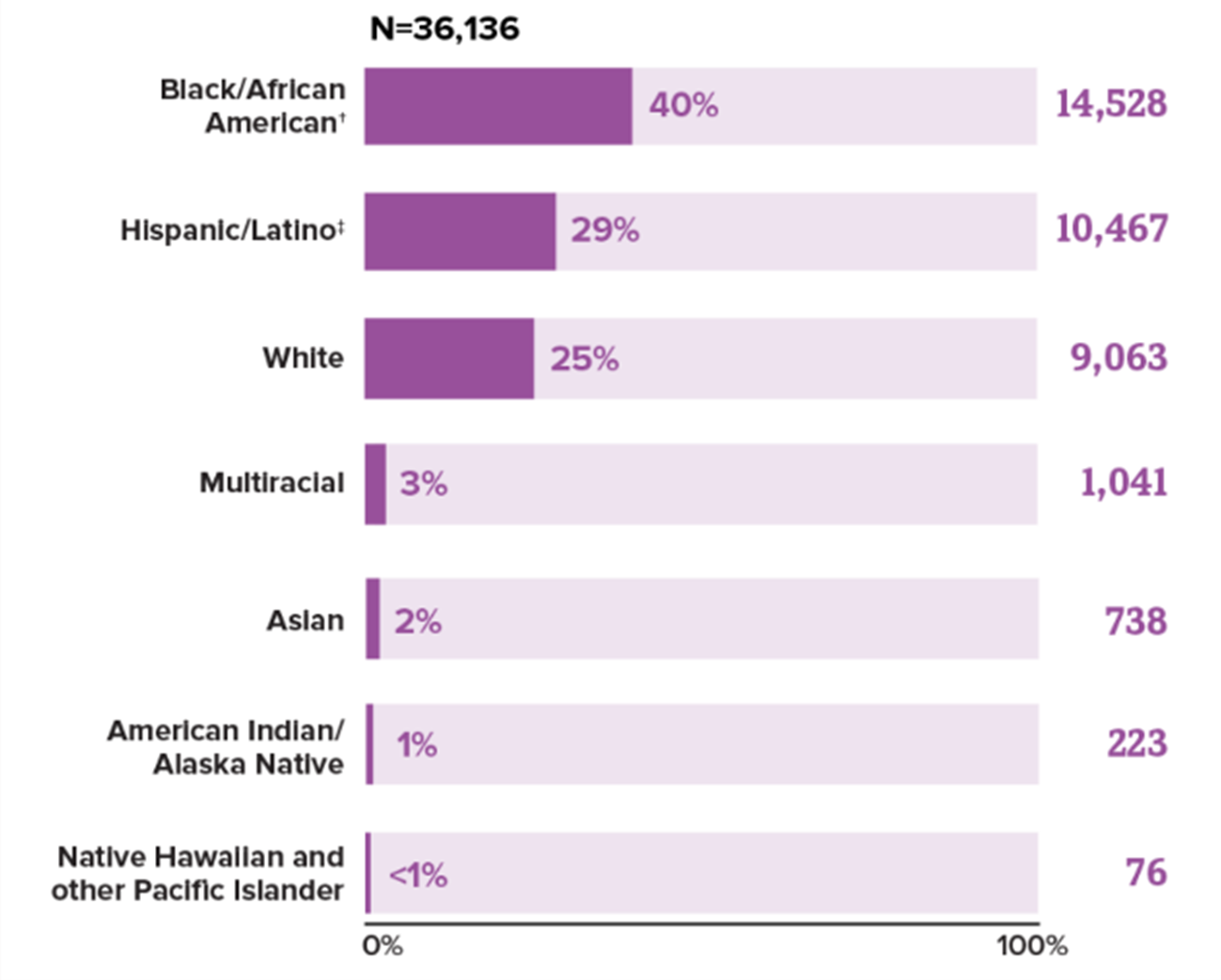
* Among people aged 13 and older.
† Black refers to people having origins in any of the Black racial groups of Africa. African American is a term often used for people of African descent with ancestry in North America.
‡ Hispanic/Latino people can be of any race.
Source: CDC. Diagnoses of HIV infection in the United States and dependent areas, 2021. HIV Surveillance Report 2023;34.
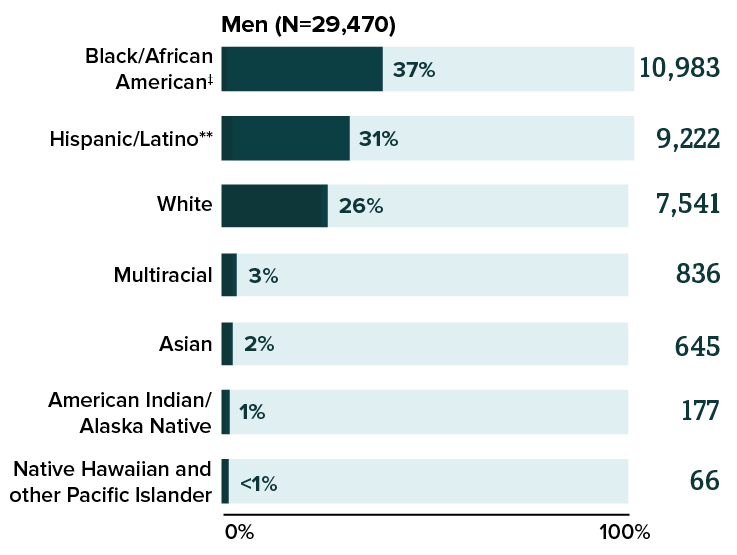
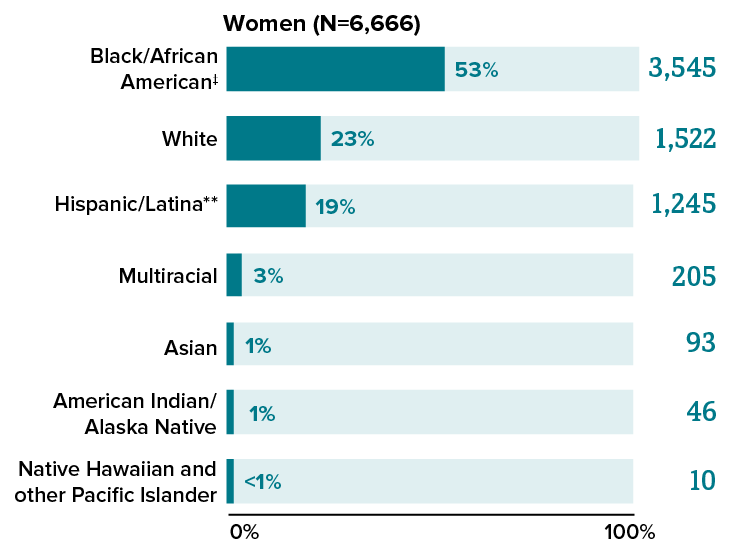
* Among people aged 13 and older.
† Based on sex assigned at birth and includes transgender people.
‡ Black refers to people having origins in any of the Black racial groups of Africa. African American is a term often used for people of African descent with ancestry in North America.
** Hispanic/Latino people can be of any race.
Source: CDC. Diagnoses of HIV infection in the United States and dependent areas, 2021. HIV Surveillance Report 2023;34.
From 2017 to 2021, HIV diagnoses decreased 7% overall in the US and dependent areas. But trends varied for different racial and ethnic groups.
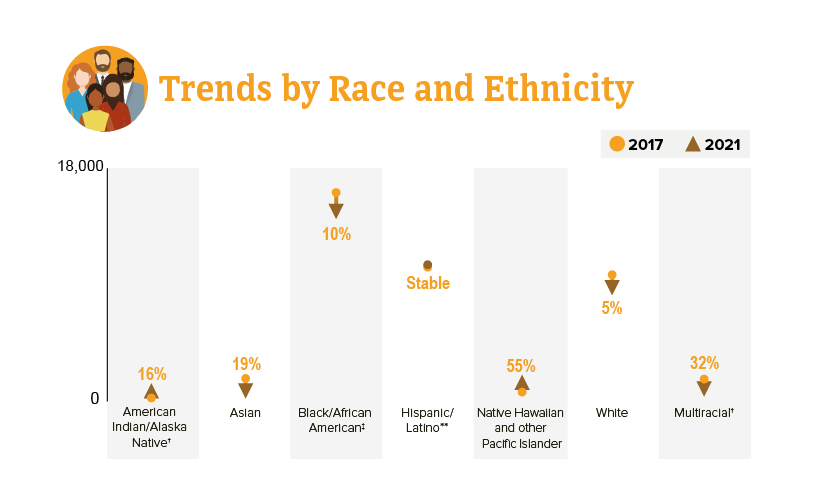
*Among people aged 13 and older.
† Changes in subpopulations with fewer HIV diagnoses can lead to a large percentage increase or decrease.
‡ Black refers to people having origins in any of the Black racial groups of Africa. African American is a term often used for people of African descent with ancestry in North America.
** Hispanic/Latino people can be of any race.
Source: CDC. Diagnoses of HIV infection in the United States and dependent areas, 2021. HIV Surveillance Report 2023;34.
- CDC. Diagnoses of HIV infection in the United States and dependent areas, 2021. HIV Surveillance Report 2023;34.
- CDC. Estimated HIV incidence and prevalence in the United States 2017–2021. HIV Surveillance Supplemental Report 2023;28(3).
- CDC. Monitoring selected national HIV prevention and care objectives by using HIV surveillance data—United States and 6 dependent areas, 2021. HIV Surveillance Supplemental Report 2023;28(4).
- CDC. HIV infection risk, prevention, and testing behaviors among persons who inject drugs—National HIV Behavioral Surveillance: injection drug use, 23 U.S. Cities, 2018 [PDF – 2 MB]. HIV Surveillance Special Report 2020;24.
- CDC. Sexually transmitted disease surveillance, 2021. Accessed April 26, 2023.
- CDC. Quality of life and HIV stigma—Indicators for the National HIV/AIDS Strategy, 2022–2025, CDC Medical Monitoring Project, 2017–2020 cycles. HIV Surveillance Special Report 2022;30.
- CDC. Behavioral and clinical characteristics of persons with diagnosed HIV infection—Medical Monitoring Project, United States 2020 cycle (June 2020–May 2021). HIV Surveillance Special Report 2022;29.